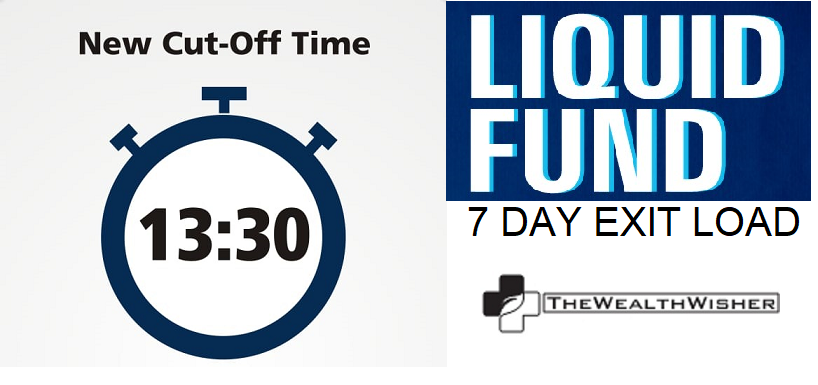You must be hearing or receiving emails that Liquid Funds with change w.e.f 20 Oct 2019. In this post let me tell you what is a liquid fund. We will also know a new category called the Overnight Fund. Also, liquid funds are not going anywhere, they will stay with some new features. Let’s check the recent changes in the Liquid Fund category by SEBI.
When we say Liquid – it means liquidity first. Liquid funds are meant for short term parking. The reasons for short term parking can be:
- Your horizon is short. You cannot go for a long term investment.
- You are waiting for an opportunity to invest but meanwhile, you want better returns than a bank.
Liquid Funds are those mutual funds that invest their corpus in very short term instruments that carry very low risk.
These instruments include government’s treasury bills, call money, short term money market papers that provide high liquidity but come with low volatility.
SEBI has mandated that no Liquid Fund can have papers in their portfolio with a residual maturity of more than 91 days.
Why Liquid Funds?
Liquid Funds are ideal for parking funds for a very short term, say about 1 day to 3 months.
Given the fact that the rate of interest on the savings bank account, FDs and RD have dipped substantially in the past years, these funds have turned more attractive due to their ability to give higher returns compared to competing products.
 Liquid funds are the largest funds in the mutual fund industry, as they are widely used by corporates to park idle money. No many individuals also invest in them to avail the benefits.
Liquid funds are the largest funds in the mutual fund industry, as they are widely used by corporates to park idle money. No many individuals also invest in them to avail the benefits.
Liquid fund returns have been in the range of 5% to 8%, depending on the short term rate movement in the economy.
Another benefit of liquid funds is taxation. Liquid funds come under securities. They get the benefit from Short Term & Long Term Capital Gain. They are better post-tax when compared to interest offered by banks. Refer to the Taxation Card for current FY here.
Recent Changes in Liquid Funds
Post 20, Oct 2019 liquid fund will have an exit load. So the liquidity will be there but it will be a bit tight for the first 7 days.
They will have a “Graded Exit Load” (means reducing by the number of days of investments) for the first 7 days.
 Impact: The impact of this load will be on returns in case investor withdraws during the load period. This will as follows:
Impact: The impact of this load will be on returns in case investor withdraws during the load period. This will as follows:

The returns still are way better than bank savings bank. With carefully planning the horizon of investments, one can get better returns than savings bank or current account or short term FDs.
So What To Do?
- One has to be clear of the horizon. If the money is for 7 days plus but less than 3 months it can go to the liquid fund.
- Investors with less than 7 days of investment horizon should park funds in Overnight funds in order to mitigate the impact of exit load in liquid funds on their returns.
Introducing the Overnight Funds
These are not new funds and were introduced last year when SEBI did the Categorization & Reclassification of the funds.
Overnight Funds as the name suggest, will invest in securities maturing daily.
What should you do?
The investment should be based on goals (time horizon), asset allocation, ease of transaction & taxation.
 Goals: For long term goals, equity is the best way. For contingency fund creation one can look at the combination of liquid, short term, and long term debt funds.
Goals: For long term goals, equity is the best way. For contingency fund creation one can look at the combination of liquid, short term, and long term debt funds.
Asset Allocation: Normally when you invest through asset allocation, you are sure of equity & debt mix. You should not alter this. In case the mix says Liquid Funds with withdrawal (or switch or STP) planned in 7 days, switch to overnight funds.
Ease of transaction: for Overnight & Liquid funds the cut-off timing is 1: 30 pm for purchase. The withdrawal cut off is 3 pm and you get funds on the next working day. That will remain as it is. For small investors, few MFs have ATM Cards, which can be used to withdraw instant money using ATM machines of the banking network.
Taxation: No change.
I hope this solves your questions on liquid funds, new changes & overnight fund category.
Do ask your doubts in the comments section below, and we will help you with our best.
More Reading:










